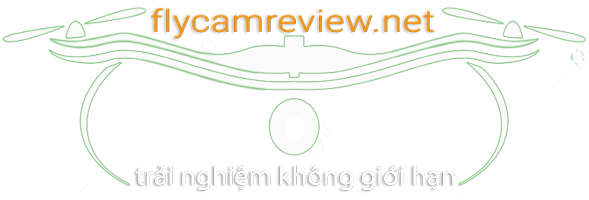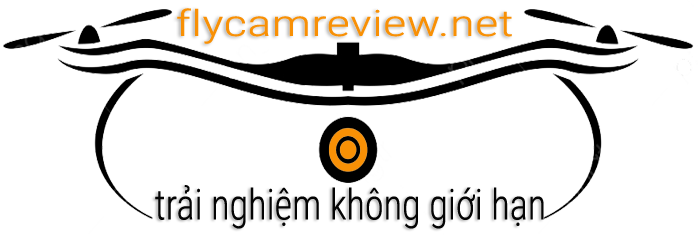Introduction to Flycam DJI Mini 1
In the ever-evolving world of aerial imaging and videography, the DJI Mini 1, also known as the Mavic Mini, has emerged as a versatile and compact flycam that caters to the needs of both hobbyists and seasoned filmmakers. With its lightweight design of less than 0.55 lbs (approximately 249 grams), this drone is almost as compact as a smartphone, making it easy to transport and ideal for adventurous outdoor activities.
What sets the DJI Mini 1 apart is its ability to capture stunning HD footage with a 2.7K camera and an innovative 3-axis gimbal that ensures impressive stabilization during flight. This means that even without a significant investment in expensive equipment, users can still enjoy the benefits of high-quality cinematography. It offers a similar thrill to driving a sports car – the speed and agility are there, but without the need for a massive investment in premium vehicles.

The capabilities of the DJI Mini 1 can be further explored through its user-friendly features. Integrated smart flight modes like QuickShots make it simple to capture spectacular aerial shots, even for beginners. This democratizes film production, empowering more people to create visually appealing content and share their stories on platforms like YouTube and Instagram.
Moreover, one can consider the implications of this for the creative process. The accessibility of drones like the Mini 1 could lead to a revolution in the way we capture our surroundings – not just for professional purposes, but also for personal narratives. Imagine a family documenting their annual vacation from a new perspective or a local artist capturing an artistic project from the sky. This new approach to storytelling enables us to view the world from different angles and deepens our understanding of space and connectivity.
However, the growing popularity of drones also brings challenges. The increase in the number of flying devices raises questions about privacy and regulation. How do we ensure our airspaces remain safe while enjoying the freedom that this technology offers? The balance between creativity and responsibility will be crucial as more people gain the ability to fly with devices like the DJI Mini 1.
In the following sections, we will delve deeper into the key features, performance, and creative potential of the DJI Mini 1, as well as explore the considerations and challenges associated with this remarkable flycam.

Key Features of the DJI Mini 1
Lightweight Design and Portability
The DJI Mini 1 is a true marvel of engineering, weighing in at less than 0.55 lbs (approximately 249 grams). This compact design makes it almost as small as a smartphone, allowing for easy transport and effortless integration into any adventurous outdoor activity.
One of the most impressive aspects of the Mini 1’s lightweight construction is its ability to maintain a high level of performance and functionality. Despite its diminutive size, this drone is packed with cutting-edge technology that enables it to capture stunning aerial footage and deliver a seamless flying experience.
The portability of the DJI Mini 1 is a game-changer for users who value versatility and convenience. Whether you’re hiking through rugged terrain, exploring urban landscapes, or simply enjoying a day at the park, this flycam can easily be tucked into a backpack or even a large pocket, making it a constant companion for your creative endeavors.
The lightweight design also contributes to the Mini 1’s impressive flight time. With a maximum battery life of up to 30 minutes, users can spend more time capturing breathtaking aerial shots without the need for constant battery swaps or recharging. This extended flight time allows for more immersive and dynamic filming, unleashing the true potential of this compact powerhouse.

High-Definition Imaging Capabilities
At the heart of the DJI Mini 1 lies a highly capable 2.7K camera that delivers stunning image and video quality. This sensor, combined with the drone’s advanced image processing technology, enables users to capture detailed, vibrant, and visually striking aerial footage.
One of the key advantages of the Mini 1’s camera is its ability to record in high-definition resolutions, allowing for a level of detail and clarity that was previously reserved for larger and more expensive drones. The 2.7K video capture, with a resolution of 2720 x 1530 pixels, provides ample detail and flexibility for post-production editing, enabling users to crop, zoom, and manipulate their footage without compromising its quality.
In addition to the impressive video capabilities, the DJI Mini 1’s camera also excels at capturing high-quality still images. With a 12-megapixel sensor, users can create breathtaking aerial photographs that showcase their unique perspectives and artistic visions. The camera’s ability to capture rich, vibrant colors and excellent dynamic range ensures that every frame captured is a potential masterpiece.
The Mini 1’s camera performance is further enhanced by its integration with DJI’s advanced image processing algorithms. These algorithms work in real-time to optimize the footage, reducing noise, enhancing sharpness, and ensuring consistent color balance, even in challenging lighting conditions.
This combination of high-definition imaging and intelligent processing sets the DJI Mini 1 apart from other compact drones, empowering users to capture cinematic-quality aerial content without the need for bulky and expensive camera equipment.
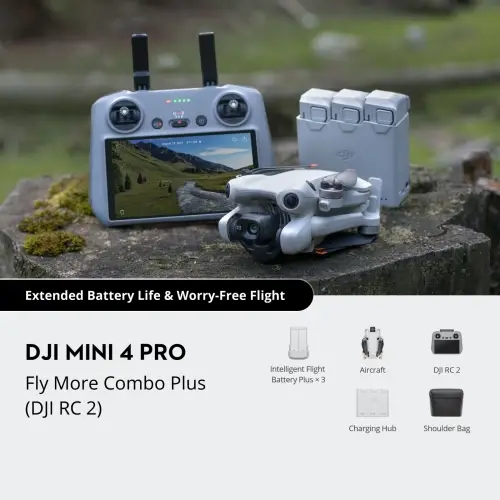
Three-Axis Gimbal for Stability
One of the standout features of the DJI Mini 1 is its innovative 3-axis gimbal, which plays a crucial role in ensuring the stability and smoothness of the footage captured during flight.
The 3-axis gimbal is responsible for precisely controlling the camera’s orientation, compensating for the drone’s movements and vibrations. This stabilization system works tirelessly to keep the camera level and steady, even in the face of challenging wind conditions or sudden changes in the drone’s orientation.
The result of this advanced stabilization technology is footage that is remarkably smooth and cinematic, with minimal shaking or jitter. This level of stability allows users to capture professional-grade aerial shots, from sweeping panoramas to dynamic camera movements, without the need for expensive gimbals or post-production stabilization.
The precision of the 3-axis gimbal also enables the DJI Mini 1 to maintain a consistent horizon line, even during complex maneuvers or when the drone is banking at sharp angles. This feature is particularly important for capturing visually stunning and aesthetically pleasing aerial footage, as it ensures that the viewer’s attention remains focused on the subject rather than being distracted by unstable or disorienting camera movements.
Furthermore, the 3-axis gimbal’s ability to dampen external forces and vibrations contributes to the overall image quality of the footage captured by the DJI Mini 1. By minimizing the impact of these external factors, the gimbal helps to preserve the sharpness, clarity, and detail of the video and still images, elevating the overall production value of the content.

Smart Flight Modes and User-Friendliness
One of the standout features of the DJI Mini 1 is its suite of user-friendly smart flight modes, which make it easier than ever for both novice and experienced pilots to capture breathtaking aerial footage.
The QuickShot feature, for example, is a game-changer for beginners. This intelligent flight mode allows the drone to automatically execute pre-programmed camera movements, such as dramatic sweeping shots, orbital circles, and even cinematic “dronie” selfies. By taking care of the complex flight maneuvers, QuickShot enables users to focus on framing and composing their shots, ensuring that even novice pilots can create professional-looking aerial content.
Another impressive smart flight mode is ActiveTrack, which allows the DJI Mini 1 to autonomously track and follow a selected subject. This feature is particularly useful for capturing dynamic action sequences, such as a person running, a pet playing, or a moving vehicle. By keeping the subject centered in the frame, ActiveTrack frees up the pilot to concentrate on capturing the perfect shot, without the need for manual piloting.
The DJI Mini 1’s intuitive user interface and streamlined flight controls further contribute to its user-friendliness. The accompanying DJI Fly app provides a seamless and responsive connection between the drone and the pilot’s mobile device, allowing for easy access to flight settings, camera controls, and even in-flight telemetry.
Moreover, the Mini 1’s compact design and lightweight construction make it easy to transport and set up, without the need for complex assembly or bulky equipment. This accessibility empowers a wider range of users, from hobbyists to aspiring filmmakers, to explore the creative potential of aerial videography and photography.
By combining these smart flight modes and user-friendly features, the DJI Mini 1 democratizes aerial imaging, making it possible for more people to capture stunning aerial content and share their unique perspectives with the world.

Performance and Usability
Battery Life and Flight Time
One of the key factors in determining the overall performance and usability of a drone is its battery life and flight time. The DJI Mini 1 excels in this regard, offering impressive battery endurance that allows users to make the most of their aerial filming and photography sessions.
With a maximum flight time of up to 30 minutes on a single battery charge, the DJI Mini 1 provides ample time for users to capture a variety of aerial shots and explore their creative vision. This extended flight time is particularly noteworthy given the drone’s compact size and lightweight design, which typically come at the expense of battery life for many competing models.
The DJI Mini 1’s efficient power management system and advanced battery technology work in tandem to maximize the drone’s flight time. The intelligent battery monitoring and temperature regulation algorithms ensure that the battery is utilized to its fullest potential, without compromising safety or performance.
Moreover, the Mini 1’s battery can be easily swapped, allowing users to carry additional batteries and quickly resume their flights without the need for lengthy recharging periods. This flexibility is especially valuable for those engaging in extended filming sessions or exploring remote locations where access to power sources may be limited.
The impressive battery life and flight time of the DJI Mini 1 translate to increased productivity and creative freedom for users. With the ability to capture more aerial footage in a single session, filmmakers and photographers can devote more time to experimentation, exploration, and the refinement of their shots, ultimately leading to higher-quality content.

Remote Control and App Integration
The DJI Mini 1’s performance and usability are further enhanced by its seamless integration with the DJI Fly app and the included remote control.
The DJI Fly app, available for both iOS and Android devices, serves as the command center for the Mini 1. Through this intuitive interface, users can access a wealth of features and controls, including real-time video feed, camera settings, flight modes, and telemetry data.
The app’s responsive design and user-friendly layout make it easy for both novice and experienced pilots to navigate and take full advantage of the drone’s capabilities. The ability to preview the camera’s live feed directly on a smartphone or tablet screen allows for precise framing and composition, ensuring that users can capture their desired shots with confidence.
Complementing the mobile app is the included remote control, which provides a direct and tactile connection between the pilot and the DJI Mini 1. The ergonomic design of the remote, with its well-placed controls and intuitive layout, allows for precise and responsive flight maneuvers, enabling users to seamlessly navigate the drone through complex aerial movements.
The integration between the DJI Fly app and the remote control is particularly impressive, allowing for a seamless and responsive control experience. By combining the visual feedback from the app with the physical controls of the remote, users can achieve a level of control and precision that is essential for capturing cinematic aerial footage.

Furthermore, the DJI Fly app offers a range of advanced features, such as real-time telemetry, flight logs, and firmware updates, empowering users to monitor the drone’s performance, track their flight history, and keep their Mini 1 up-to-date with the latest software enhancements.
This comprehensive integration between the DJI Mini 1, the Fly app, and the remote control is a testament to the thoughtful design and engineering that has gone into this compact yet capable flycam.
Ease of Use for Beginners and Professionals
One of the standout features of the DJI Mini 1 is its ability to cater to users of all skill levels, from complete beginners to seasoned professionals. This versatility is achieved through a carefully crafted balance of user-friendly features and advanced capabilities.
For novice pilots, the DJI Mini 1 offers a gentle learning curve that allows them to gradually develop their skills and confidence in flying a drone. The intuitive control scheme, coupled with the intelligent flight modes like QuickShot and ActiveTrack, enables even first-time users to capture stunning aerial footage with minimal effort.
The DJI Fly app, which serves as the command center for the Mini 1, further enhances the user experience for beginners. The app’s clean and intuitive interface, coupled with in-app tutorials and safety guidelines, provide a supportive and informative environment for new pilots to familiarize themselves with the drone’s operation and capabilities.
Moreover, the Mini 1’s lightweight design and compact size make it an ideal choice for those who are new to the world of aerial imaging. The ease of transport and setup allows beginners to focus on the creative aspects of their filmmaking or photography, rather than being burdened by complex assembly or bulky equipment.

At the same time, the DJI Mini 1 offers a range of advanced features and settings that cater to the needs of professional users. The high-quality camera and 3-axis gimbal, for instance, provide the level of performance and control required by seasoned filmmakers and photographers.
The ability to fine-tune camera settings, such as exposure, white balance, and picture profiles, empowers users to achieve their desired visual aesthetic and cinematic look. Additionally, the availability of manual flight controls and the ability to disable certain safety features allow experienced pilots to push the boundaries of their creativity and capture unique, awe-inspiring aerial shots.
By striking this balance between ease of use and advanced capabilities, the DJI Mini 1 has the potential to become a valuable tool for a wide range of users, from hobbyists and aspiring content creators to seasoned professionals in the fields of aerial videography and photography.
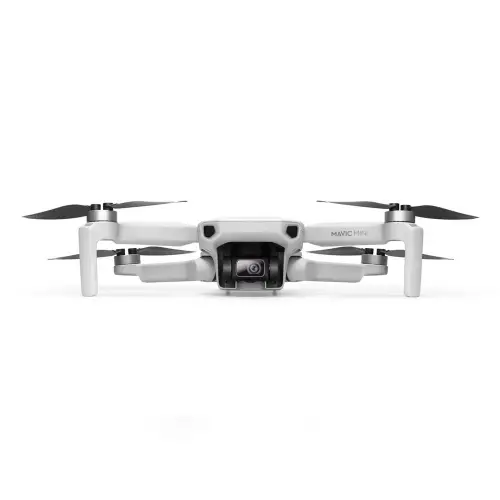
Creative Possibilities with the DJI Mini 1
Capturing Stunning Aerial Footage
The DJI Mini 1’s impressive imaging capabilities and stabilization technology open up a world of creative possibilities for users to capture breathtaking aerial footage.
One of the most captivating aspects of the Mini 1’s aerial cinematography is its ability to provide a unique perspective on familiar landscapes and environments. By elevating the camera above the ground, users can reveal hidden details, capture unexpected angles, and present a fresh interpretation of their surroundings.
Whether it’s soaring over a bustling city skyline, gliding through a serene forest canopy, or tracking a subject across a vast open field, the DJI Mini 1 empowers users to capture footage that is visually striking and emotionally evocative.
The drone’s compact size and lightweight design also allow for greater maneuverability and access to previously inaccessible locations. Users can navigate the Mini 1 into tight spaces, around obstacles, and even through narrow passages, opening up a world of creative possibilities that were once out of reach for larger, bulkier drones.

The 3-axis gimbal plays a crucial role in elevating the production value of the footage captured by the DJI Mini 1. By providing rock-solid stabilization, the gimbal ensures that even the most dynamic and fast-paced aerial movements are rendered with a level of smoothness and cinematic quality that was previously only attainable with professional-grade equipment.
Furthermore, the Mini 1’s high-definition imaging capabilities, with its 2.7K video and 12-megapixel still photography, offer ample room for post-production refinement and creative experimentation. Users can leverage advanced editing techniques, such as color grading, special effects, and compositing, to further enhance the visual impact of their aerial footage.
Whether it’s capturing sweeping landscape shots, following the graceful movements of athletes or wildlife, or exploring the unique architectural features of a city, the DJI Mini 1 provides a versatile and accessible platform for users to unleash their creative vision and captivate their audiences.
Storytelling Through Drone Photography
In addition to its impressive video capabilities, the DJI Mini 1 also excels at capturing stunning aerial photographs that can be used to tell compelling visual stories.
One of the key advantages of the Mini 1’s aerial photography is its ability to provide a unique perspective that is often inaccessible to traditional ground-based cameras. By lifting the camera high above the ground, users can capture breathtaking vistas, intricate patterns, and unexpected moments that can transform the mundane into the extraordinary.
The drone’s lightweight design and compact size also allow for greater mobility and flexibility when capturing photographic subjects. Whether it’s documenting the awe-inspiring scale of a towering skyscraper, the intricate details of a historic city center, or the serene beauty of a remote natural landscape, the DJI Mini 1 can be easily maneuvered to capture the perfect shot.
Moreover, the Mini 1’s advanced camera and imaging algorithms ensure that the resulting photographs are of exceptional quality, with rich colors, sharp details, and a high dynamic range that can rival the output of professional-grade cameras.
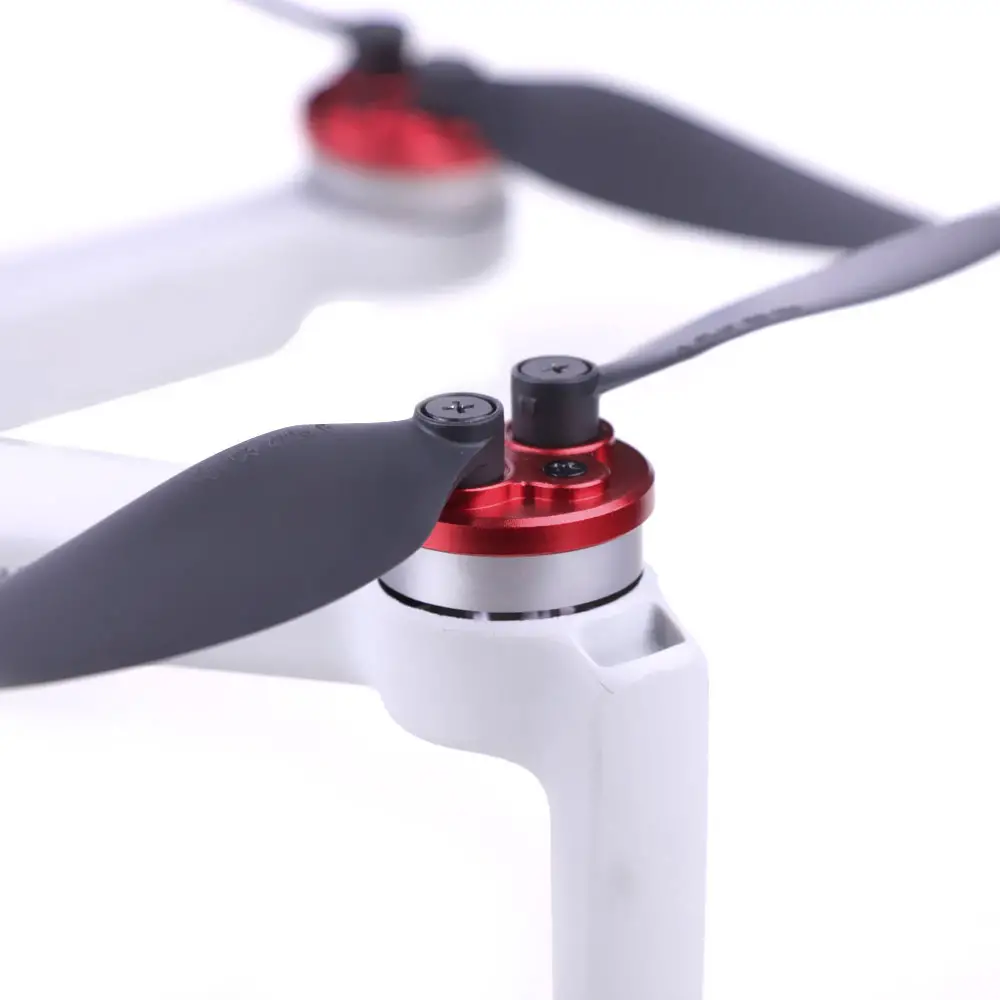
This level of image quality, combined with the unique aerial perspective, empowers users to craft visually stunning and narratively compelling photographs that can captivate viewers and tell a story that words alone cannot convey.These aerial photographs can evoke emotions, spark curiosity, and transport viewers to places they may have never experienced firsthand. By juxtaposing different elements within the frame or capturing fleeting moments from above, photographers can convey complex narratives that resonate with their audiences.
For instance, a photograph of a winding river snaking through a verdant valley not only showcases nature’s beauty but can also tell a story about the journey of water, the life it sustains, and the erosion of landscapes over time. Similarly, an aerial shot of a bustling market can highlight the vibrancy of human activity while providing context about cultural practices and community interactions.
The storytelling potential of drone photography is vast, and the DJI Mini 1 serves as an ideal tool for those looking to explore this medium. With its ability to hover steadily in various conditions and capture high-resolution images, users can focus on composing their shots and crafting narratives without being hindered by technical limitations.

Examples of Creative Projects Using the Mini 1
The versatility of the DJI Mini 1 has inspired countless creators to embark on exciting projects that showcase their artistic expression and storytelling capabilities. From nature documentaries to promotional videos, the possibilities are virtually endless.
One notable example includes travel vlogs, where content creators use the Mini 1 to document their adventures in breathtaking locations. By combining stunning aerial shots with ground footage, vloggers can provide their audience with a comprehensive view of the places they visit, enhancing the overall narrative of their journeys. The aerial perspective adds a layer of depth and intrigue, allowing viewers to appreciate the scale and beauty of natural features like mountains and coastlines.
In the realm of real estate, the Mini 1 has proven to be an invaluable asset for agents and property developers. Aerial photography can effectively showcase properties from angles that traditional ground-level photography cannot achieve. Capturing expansive views of the surrounding landscape, backyard spaces, and unique architectural details can significantly enhance marketing efforts and attract potential buyers.

Moreover, many artistic filmmakers have utilized the Mini 1 to create short films and visual art pieces. By experimenting with flight paths and creative framing, they can craft dynamic sequences that bring their visions to life. For example, filmmakers might combine sweeping aerial shots of a cityscape at sunset with intimate close-ups of characters’ emotions, creating a juxtaposition that deepens the viewer’s engagement with both the setting and the narrative.
As the drone industry continues to evolve, it’s likely that we will see even more innovative applications for the DJI Mini 1 and similar drones. As users discover new ways to harness the capabilities of these devices, the future of creative projects will undoubtedly become more vibrant and diverse.
Comparison with Other Drones
DJI Mini 1 vs. Mavic Air 2
When examining the DJI Mini 1 in comparison to other popular drones, such as the Mavic Air 2, it’s important to consider factors like portability, imaging capabilities, and price point.
The DJI Mini 1 stands out primarily due to its lightweight design and compact size, making it one of the most portable drones on the market. Weighing just 249 grams, it can easily fit into a backpack or purse, allowing users to carry it anywhere without feeling encumbered. This level of convenience is particularly appealing to travelers and hobbyists who want a reliable aerial platform without the hassle of bulky equipment.

On the other hand, the Mavic Air 2 offers advanced features like a larger sensor, higher resolution video (up to 4K), and enhanced obstacle avoidance capabilities. While the Mavic Air 2 is an impressive machine, its increased weight and size make it less portable than the Mini 1. For users who prioritize convenience and ease of use, the Mini 1 may be the more attractive option.
Ultimately, the choice between the two models depends on individual needs and preferences. If high-quality imagery and advanced features are paramount, users may lean towards the Mavic Air 2. However, for those who value portability and simplicity, the DJI Mini 1 remains an excellent choice.
Why Choose the Mini 1 Over Competitors
While there are many drones available on the market, the DJI Mini 1 holds a unique position thanks to its combination of affordability, user-friendliness, and impressive performance. Compared to competitors in the same price range, the Mini 1 often emerges as a top contender, offering an exceptional balance of quality and accessibility.
One key advantage of the Mini 1 is its straightforward operation. The intelligent flight modes, such as QuickShot and Dronie, make it easy for anyone to quickly capture stunning footage without requiring extensive experience or training. This user-friendly approach democratizes aerial filmmaking, enabling aspiring creators to explore their passion with minimal barriers to entry.

Additionally, the Mini 1’s robust build quality and reputation for reliability further solidify its standing in the market. Many users rave about its ability to handle various flying conditions and maintain stability during flights, which is vital for capturing high-quality footage. Furthermore, the support and resources offered by DJI, including tutorials and customer service, ensure that users feel confident navigating any challenges that arise.
In summary, the DJI Mini 1’s combination of portability, ease of use, and consistent performance makes it a compelling choice for anyone seeking to venture into the world of aerial photography and videography.
Tips for Optimal Use of DJI Mini 1
Pre-Flight Checklist
Before embarking on your aerial adventure with the DJI Mini 1, it’s essential to conduct a thorough pre-flight checklist to ensure a seamless flying experience.
First and foremost, check the battery levels of both the drone and the remote controller. Ensuring that both components are adequately charged minimizes the risk of mid-flight interruptions. Additionally, inspect the propellers for any signs of wear or damage. Properly functioning propellers are crucial for flight stability and performance.

Next, assess the weather conditions. The Mini 1 performs best in calm weather, so avoid flying in strong winds or heavy rain. Checking local weather forecasts and observing real-time conditions can prevent potential mishaps.
Lastly, familiarize yourself with the surrounding area before takeoff. Identify any obstacles like trees or buildings that could interfere with your flight path, and make note of landmarks to help orient yourself during your flight.
Taking the time to complete this checklist not only enhances safety but also contributes to a more enjoyable and efficient flying experience.
Best Practices for Aerial Filming
To maximize the potential of the DJI Mini 1 when capturing aerial footage, it’s crucial to adopt best filming practices that can elevate the quality of your work.
Begin by experimenting with various flight paths and camera angles. Utilizing slow, smooth movements allows for more cinematic results; abrupt transitions can disrupt the flow and visual appeal of the footage. Plan your shots ahead of time, keeping in mind the story you wish to tell through your visuals.
It’s also beneficial to shoot during the golden hours—early morning or late afternoon—when the sunlight casts a warm glow and soft shadows across landscapes. This natural lighting enhances colors and textures, adding depth and richness to your footage.
Finally, don’t shy away from using the drone’s advanced features, such as QuickShots, to simplify your filming process. These automated modes can produce impressive results with minimal effort, allowing you to focus on composition and creativity rather than technical execution.
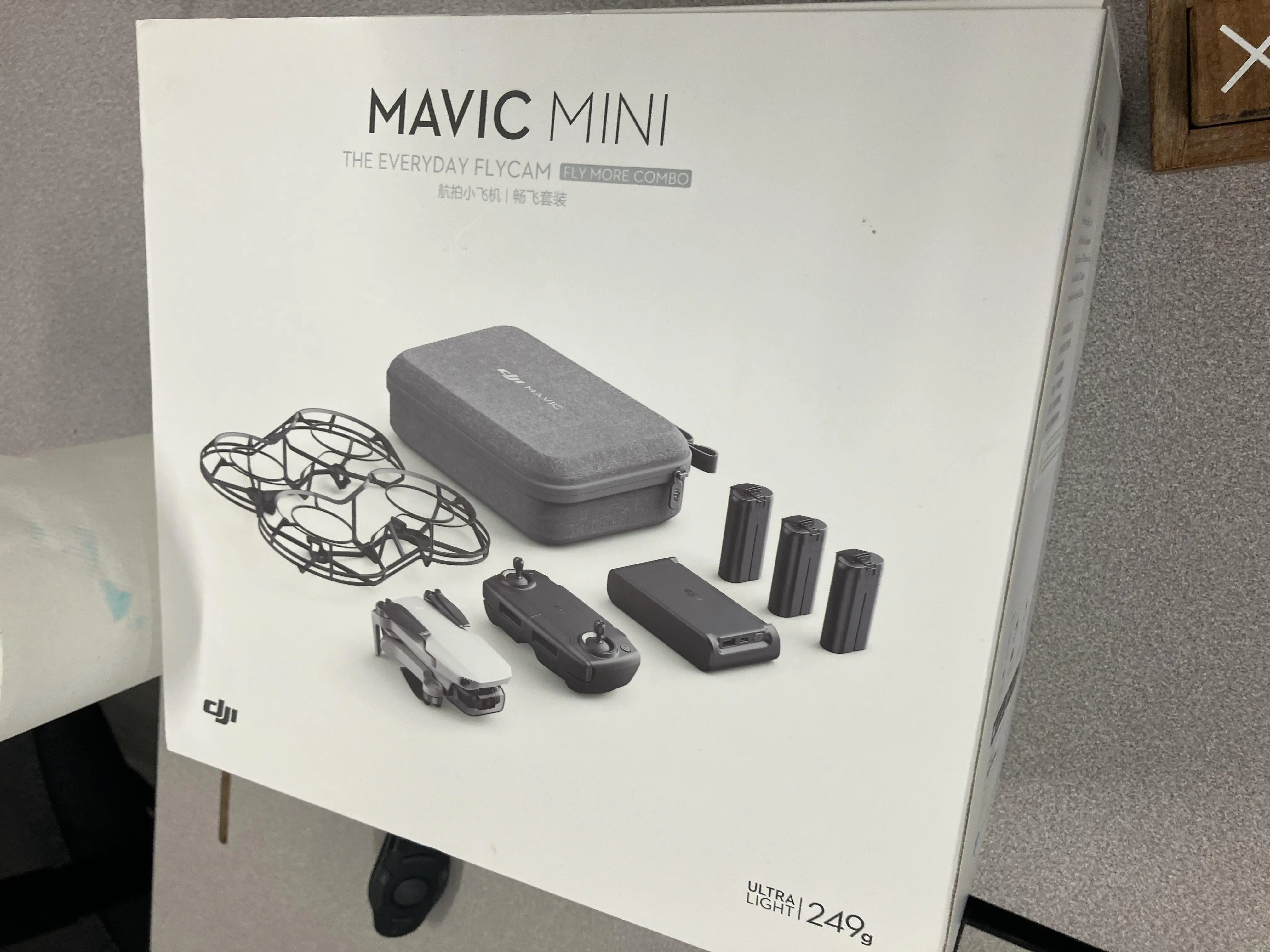
Utilizing Smart Flight Modes Effectively
The DJI Mini 1 is equipped with several smart flight modes that can streamline your aerial filming and help you achieve professional-looking results with ease.
One of the standout modes is ActiveTrack, which enables the drone to autonomously follow a subject while keeping them in frame. This feature is perfect for capturing dynamic action shots, whether you’re filming athletes, pets, or vehicles in motion. Understanding how to fine-tune the settings, such as speed and distance, can greatly enhance the effectiveness of this mode.
Additionally, the QuickShot modes offer a range of automated filming options, from Rocket and Dronie to Circle and Helix. Each mode is designed to execute specific movement patterns that add flair and depth to your footage. By integrating these modes into your shooting repertoire, you can create visually engaging content that captures the essence of your subjects while showcasing your creativity.
Finally, always remember to review and practice these features before your actual shoot. Familiarity with the smart flight modes ensures that you can utilize them confidently and creatively, ultimately resulting in polished and captivating aerial content.

Safety and Regulations for Drone Flying
Understanding Local Drone Laws
A critical aspect of operating the DJI Mini 1—or any drone, for that matter—is understanding local drone laws and regulations. Different regions have varying rules governing drone usage, and adhering to these regulations is essential for maintaining safety and legality.
Most countries require drone operators to adhere to restrictions regarding maximum altitude, no-fly zones, and proximity to crowded areas. In many cases, registering your drone and obtaining proper licensing or permits is necessary before flying. To ensure compliance, it’s advisable to research your local regulations and stay updated on any changes that may occur.
Additionally, familiarizing yourself with airspace classifications can provide further clarity on where you can safely fly your drone. Understanding controlled and uncontrolled airspaces will help you navigate your surroundings responsibly, preventing unintentional violations that could lead to penalties or dangerous situations.
Staying informed about local laws is not only a legal obligation but also a vital component of responsible drone operation.

Privacy Considerations When Using Drones
As drone technology becomes more prevalent, privacy concerns have emerged regarding the use of these devices, especially in populated areas.
When operating the DJI Mini 1, it is crucial to respect the privacy of others. This means avoiding flights over private properties without permission and being mindful of capturing footage or images that include individuals without consent. Such actions can lead to distrust and conflict within communities, as well as potential legal repercussions.
Additionally, consider the implications of sharing your aerial footage publicly. Before posting online, ask yourself whether the content could infringe on someone else’s privacy or cause discomfort. Striking a balance between creative expression and respecting the rights of others is essential for fostering a positive relationship with your audience and the wider community.
By being aware of privacy considerations, drone operators can navigate their creative ventures more thoughtfully and ethically.
How to Fly Responsibly
Flying the DJI Mini 1 responsibly involves adopting safe practices and showing respect for your environment and fellow citizens.
Start by taking the time to educate yourself on responsible flying techniques, including maintaining line-of-sight with your drone and avoiding flying near airports or other restricted areas. Practicing situational awareness while flying can help you identify potential hazards and react appropriately.
Furthermore, be considerate of wildlife and natural habitats during your flights. Avoiding sensitive areas during breeding seasons or nesting periods helps protect vulnerable species and ecosystems. Engaging in responsible flying not only prioritizes safety but also fosters a positive image of the drone community.
Ultimately, flying responsibly goes beyond mere compliance with regulations; it reflects a commitment to ethical practices that contribute to the sustainability of the hobby and the safety of all involved.

Challenges and Considerations
Potential Risks of Drone Use
Although the DJI Mini 1 empowers users to explore the skies and capture stunning footage, there are inherent risks associated with drone operation. Being aware of these risks allows pilots to mitigate dangers and enjoy their flying experiences safely.
One of the primary concerns is equipment failure. Mechanical issues, battery malfunctions, or pilot error can lead to crashes, which pose risks not only to the drone itself but also to people, properties, and wildlife below. Regular maintenance checks and thorough pre-flight inspections can significantly reduce the likelihood of equipment failure.
Moreover, external factors such as weather conditions can impact the safety of drone flights. Sudden changes in wind speed or precipitation can compromise control and stability, potentially leading to accidents. Staying attuned to real-time weather updates and exercising good judgment about flying conditions is crucial in mitigating this risk.
By acknowledging these potential risks, drone pilots can take proactive steps to ensure a safer flying experience, minimizing the likelihood of accidents and injuries.
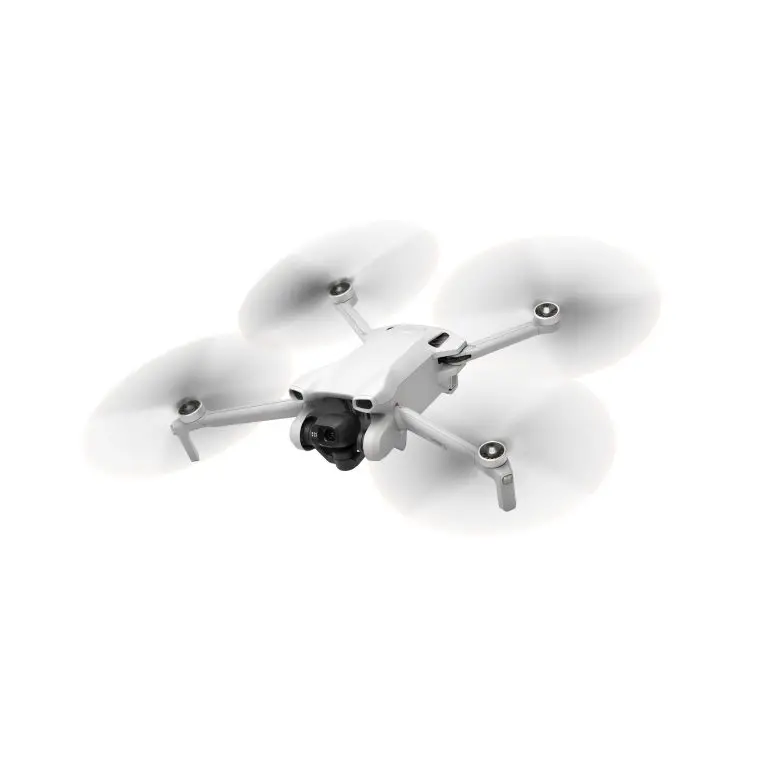
Addressing Privacy Concerns
As mentioned earlier, privacy concerns are a significant consideration for drone operators, and addressing these concerns is pivotal to maintaining trust within communities.
Open communication can play a crucial role in alleviating anxiety surrounding drone flights. Engaging with neighbors and community members before flying in shared spaces fosters goodwill and encourages transparency regarding your intentions. Informing others about your purpose for flying, whether it be for recreation or professional work, can help dispel fears and misconceptions about drones.
Additionally, implementing measures to limit invasive footage collection—such as avoiding residential areas and respecting personal boundaries—can enhance the perception of drones as valuable tools rather than intrusive gadgets. By demonstrating ethical practices and mindfulness towards privacy, drone operators can build a positive rapport with their communities.
Respecting privacy goes hand-in-hand with responsible flying, helping to establish a culture of accountability and trust in the drone community.

Future of Drone Technology
Trends in Consumer Drones
As technology advances, the future of consumer drones, including models like the DJI Mini 1, looks promising. One of the most notable trends is the continued miniaturization of drones, leading to even more portable, lightweight designs. This will further empower users to integrate drone technology into their everyday lives, whether for recreational purposes or professional applications.
Another trend is the integration of artificial intelligence (AI) into drones, which enhances autonomous functionalities. Smart flight modes are already incorporating AI for improved obstacle avoidance and tracking capabilities, and this technology will continue to develop. As drones become more intelligent, users will be able to focus on creativity and storytelling rather than technicalities.
Furthermore, advancements in battery technology promise longer flight times and quicker charging capabilities, making drones even more practical for extended use. As battery efficiency improves, users will have fewer limitations on the duration of their flights, opening up opportunities for more ambitious projects.
Overall, the future of consumer drones is characterized by enhanced capabilities, greater accessibility, and a broader range of applications that will transform the way we interact with our environments.

The Role of Drones in Content Creation
Drones have already made a substantial impact on the field of content creation, and their role is poised to expand even further in the coming years. With the growing popularity of social media platforms that prioritize visual storytelling, the demand for high-quality aerial footage has surged.
Drones like the DJI Mini 1 enable creators to produce content that captivates and engages audiences at an unprecedented level. Whether it’s for travel vlogs, real estate marketing, or cinematic productions, aerial perspectives provide a fresh lens that traditional filming methods often cannot match.
As drone technology becomes more accessible and user-friendly, an increasing number of individuals are leveraging these tools to share their stories and experiences. This democratization of aerial filmmaking encourages creativity and innovation, allowing even amateur filmmakers to contribute to the evolving landscape of visual content.
In summary, drones have carved out a niche in content creation, and their influence will only grow as technology continues to advance, empowering users to explore new frontiers in storytelling.

Notes
Summary of Key Points
The DJI Mini 1 stands as a remarkable achievement in drone technology, offering an impressive blend of portability, ease of use, and high-quality imaging capabilities. Its lightweight design makes it accessible to beginners, while its advanced features cater to seasoned professionals, allowing a broad spectrum of users to explore aerial filmmaking.
Alongside its creative possibilities, including capturing stunning footage and photography, the Mini 1 navigates the intricacies of drone regulations and privacy considerations, emphasizing responsible flying practices.
Moreover, the future of drone technology promises exciting developments in consumer drones, ensuring that the DJI Mini 1 remains a relevant and powerful tool for content creators.

5 Best Flycam Mavic Mini 2 Options for 2024 Soaring to New Heights
Further Resources for Learning
For those interested in delving deeper into the world of drone flying and aerial photography, numerous resources are available. Online forums and communities dedicated to drone enthusiasts often provide valuable insights, tips, and troubleshooting advice.
Additionally, video tutorials and workshops can offer hands-on training for mastering the DJI Mini 1 and exploring its features in-depth. Organizations such as the Academy of Model Aeronautics provide educational materials on drone regulations and best practices, helping aspiring pilots cultivate their skills responsibly.
By tapping into these resources, drone users can continue to learn and grow, unlocking the full potential of their aerial adventures.

Mistakes to Avoid
Common Errors New Drone Users Make
As beginners venture into the world of drone flying, they’re often prone to making common errors that can hinder their progress and enjoyment. One of the most frequent mistakes is neglecting to read the user manual and familiarize themselves with the drone’s functions and settings. Taking the time to understand the basics can prevent unnecessary accidents and enhance the flying experience.
Another mistake is underestimating the importance of practicing in open spaces before attempting complex maneuvers or filming scenarios. Beginners often rush into flying without fully grasping the controls, leading to crashes and frustration. Starting in wide-open areas will allow new users to gain confidence and refine their piloting skills.
Lastly, many novices fail to properly plan their flights. Knowing the area, checking for no-fly zones, and having a clear idea of what they want to capture beforehand can dramatically improve the overall outcome of their flights.
Misunderstandings About Drone Capabilities
There are several misunderstandings surrounding drone capabilities that can mislead new users. For instance, many beginners assume that the DJI Mini 1 is capable of flying in any weather condition. However, flying in strong winds, rain, or low visibility can compromise safety and result in equipment damage.

Additionally, some users may perceive drones as being entirely autonomous, leading them to believe they can simply set the drone in the air and let it do the work. While the Mini 1 does offer intelligent flight modes, active piloting is essential to ensure safety and optimal footage capture.
Finally, there is often confusion regarding the quality of aerial footage achievable with lower-priced drones compared to professional-grade models. While the DJI Mini 1 may not have all the advanced features of high-end drones, its performance is impressive for its class and can produce exceptional results in the right hands.
By addressing these common mistakes and misunderstandings, new drone users can navigate their experiences more effectively, leading to safer flights and more satisfying results.

Frequently Asked Questions
What is the maximum flight range of the DJI Mini 1?
The DJI Mini 1 boasts a maximum flight range of approximately 2.5 miles (4 kilometers). This range allows users to explore expansive areas while capturing stunning footage from afar. However, it’s important to note that maintaining a line of sight with the drone is essential for safety and compliance with regulations.
Can I use the Mini 1 in inclement weather?
While the DJI Mini 1 is designed to handle light winds, it is not recommended for use in inclement weather conditions, such as heavy rain, snow, or strong winds. Flying in adverse weather can compromise the drone’s stability and increase the risk of accidents. It’s vital to check local weather conditions before flying and postpone flights if unfavorable conditions are present.

How do I update the firmware on my drone?
Updating the firmware on the DJI Mini 1 is a straightforward process. First, connect the drone to the DJI Fly app via your mobile device. The app will prompt you if a firmware update is available. Follow the on-screen instructions to download and install the update. Keeping the firmware up-to-date is crucial for optimizing the drone’s performance and addressing any known issues.
Conclusion
In conclusion, the DJI Mini 1 represents a remarkable advancement in drone technology, blending compact design with high-quality imaging and user-friendly features. Its potential to empower both beginners and seasoned creators alike marks it as a game-changer in the world of aerial filmmaking and photography.
Through its lightweight design, advanced stabilization technology, and intelligent flight modes, the Mini 1 invites users to explore their creativity in ways previously thought difficult for casual operators. It opens up a world where stunning aerial perspectives are accessible to everyone, fostering a culture of innovation and artistic expression.

Moreover, the responsible flying practices and adherence to regulations highlighted throughout this guide serve as crucial reminders of the importance of safety and ethics in drone operation. As users embark on their aerial adventures, embracing both creativity and responsibility will ensure that the drone community continues to thrive.
With the DJI Mini 1 in hand, the sky truly is the limit, and we encourage you to dive headfirst into the incredible world of aerial imaging.
4 Best Flycam Mavic Air 2 Drones for 2024 Elevate Your Aerial Photography Game
